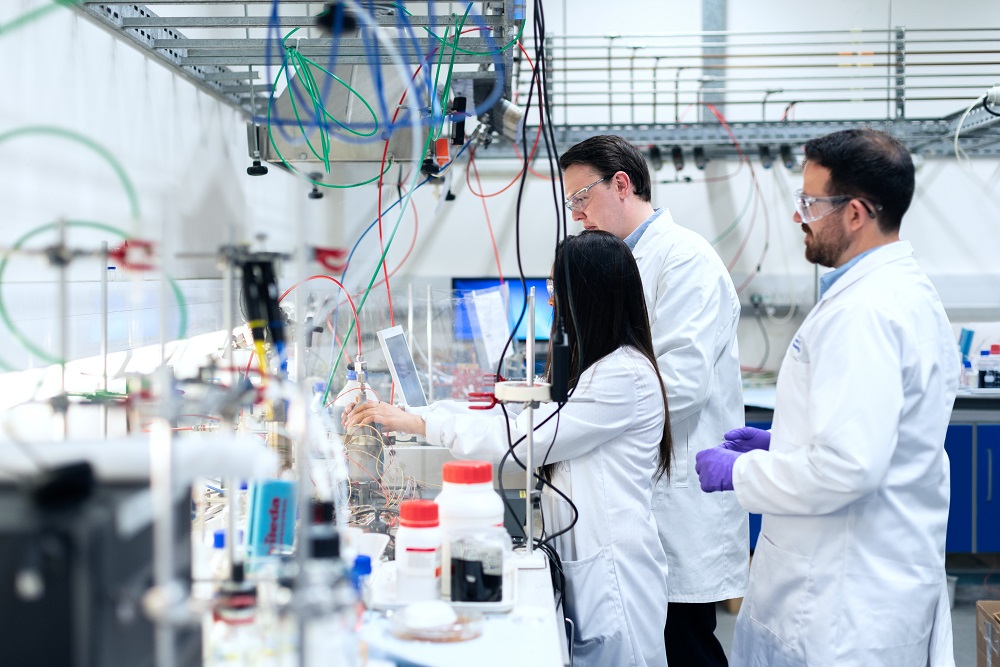Types of deinking methods, and the pros and cons of each

Here are the different types of deinking methods, and the pros and cons of each
Deinking is the separation of ink particles from fibres using various processes such as washing or flotation. The approaches are mostly determined by the ink particle size. Deinking is a typical method of cleaning wastepaper while recycling it to make new consumption paper for consumers. Printed Graphics Shreds, Office Prints, and Packaging Grades are all examples of wastepaper utilised in Deinking. It’s rare to deink an inkjet printer or paper with coloured fibres.

Enzymatic deinking and chemical deinking are the two types of deinking methods or processes discussed here, each with its own set of benefits and drawbacks.
Deinking Methods: What Are They and How Do They Work?
Deinking using enzymes or enzymatic deinking
The utilization of enzymes to regulate processes in the pulp is involved in this type of deinking. Chemical deinking, on the other hand, involves the employment of a large number of chemicals. Enzymes are utilized to remove ink stains and debris from the pulp in this procedure.
What is the procedure?
Soak the pulp in pure water for 10-15 minutes to allow it to dissolve. Enzymes are added to the mix in suitable amounts based on the pulp quantity. To promote greater dispersal, the enzymatic preparations are diluted. For the reactions to proceed, the solution is allowed to settle for thirty minutes. The pulp’s high consistency favours fibre-to-fibre attrition in the ink detachment operation. The pulp suspension is heated after 30 minutes to neutralise the enzymes and end the process. To avoid redeposition, the discharged ink is promptly removed from the fibres. After that, the fibres are retrieved for analysis.
Enzymatic deinking alters enzymes
The enzymes are changed in this type of procedure. Endoglucanase, cellulase, and xylanase are some of the most frequent enzymes employed in the production of paper to remove ink particles from the fibres. Enzymes can operate on the fibres or the ink deposit directly. These chemicals can remove tiny fibrils off the surface of ink particles, allowing for easier separation during the flotation and washing processes.
It is better suited to wastepaper.
When it comes to deinking high-quality wastepaper, where reuse is pretty much restricted due to the high amount of non-contact inks (toners), the enzymatic approach is superior.
Among the most commonly utilised enzymes for this purpose include:
- AXC
- Buzyme
- IOGEN cellulase
- Xylanase
- Novozym
- Viscozyme
- Celluclast
- Pentopan mono
- SAFISYM
Deinking using chemicals/Chemical deinking:
The majority of paper mills and paper manufacturers use this classic deinking method.

What is the procedure?
The chemical process is comparable to the enzymatic process in that it is carried out similarly. Rather than enzymes, chemicals are introduced to the pulp. The main distinction is that, unlike enzymes, chemicals do not need to be prevented from reacting.
The compounds break down in the pulp. As a result, there is no need to boil the final combination, and the ink stains are successfully removed from the fibres. Chemical deinking is an old procedure that uses a lot of chemicals that are potentially detrimental to the environment. This practice is both costly and harmful to the environment.
On the other hand, the biological deinking methods favour removing ink particles from fibres without creating significant pollution or hazardous chemical discharge. Chemical compounds raise the strength index while lowering the drainage qualities. Some compounds promote swelling, which can improve fibre bonding by increasing flexibility, conformability, and surface area.
Deinking using chemicals is more economical.
It’s done by using chemicals to separate the ink and staining particles from the fibres in the pulp. When compared to the enzymatic procedure, it is less costly. However, it has negative consequences for the ecosystem. Unlike enzymatic deinking, it has certain negative environmental consequences.
The following are some of the most commonly utilised chemicals for this purpose:
- Agalite or Talc
- Hydrogen Peroxide
- Chlorine Dioxide
- Sodium Aluminate
- Dolomite
- Polyvinyl Alcohol (PVA)
- Lime Stone
- Guar Gum
- Salt Cake
- Magnesium Bisulfite
What should both deinking methods keep in mind?
To obtain a high-quality end product, comprehensive process optimization is required. It’s crucial to understand that a specific variety of pulp reacts differently to chemical and enzyme deinking methods or treatments.
The physical qualities, rather than chemical ones, are important to the enzymatic process’ success. Enzymatic is preferred in operations that include a lot of industrial paper waste.
According to a few experts, treating the pulp with chemicals resulted in more ink removal although the material’s strength was not reduced as much. Enzymes aid ink removal too, although their actions have a considerable impact on the strength of the finished paper.
Also, learn 10 important KPIs of the Paper industry.


